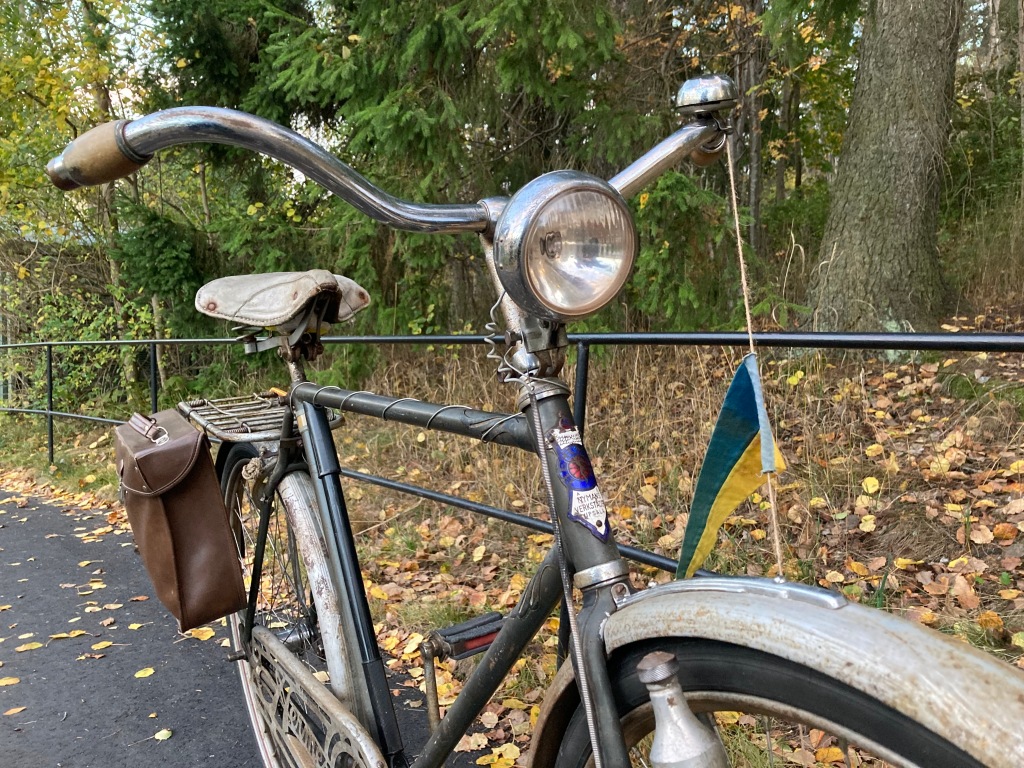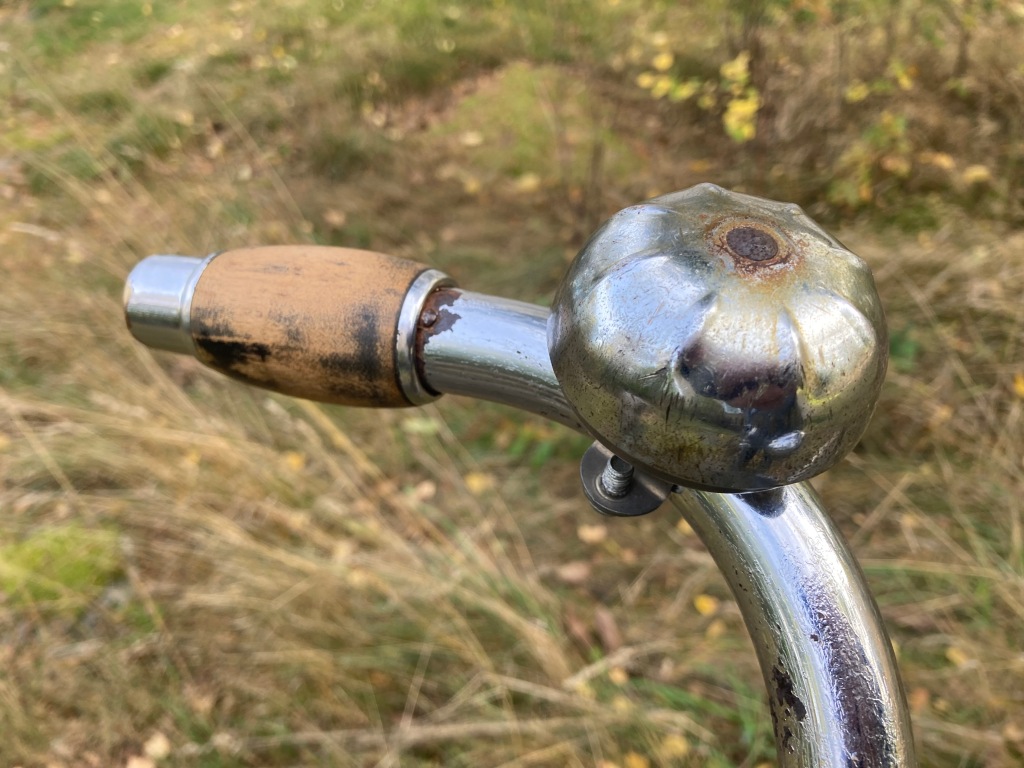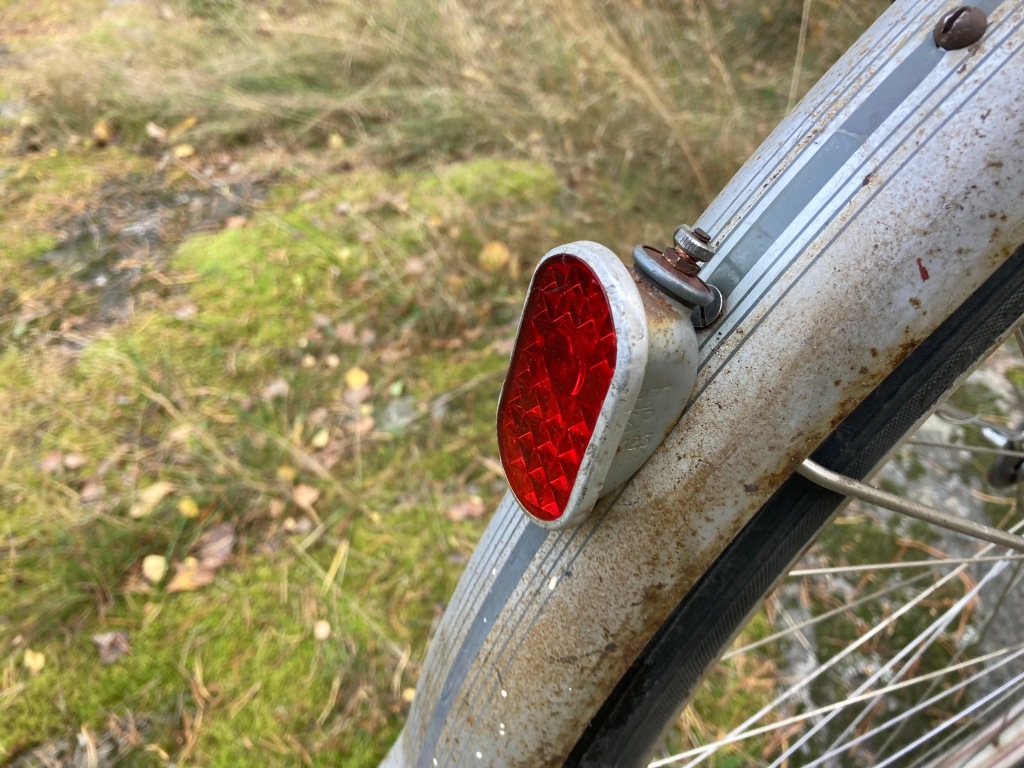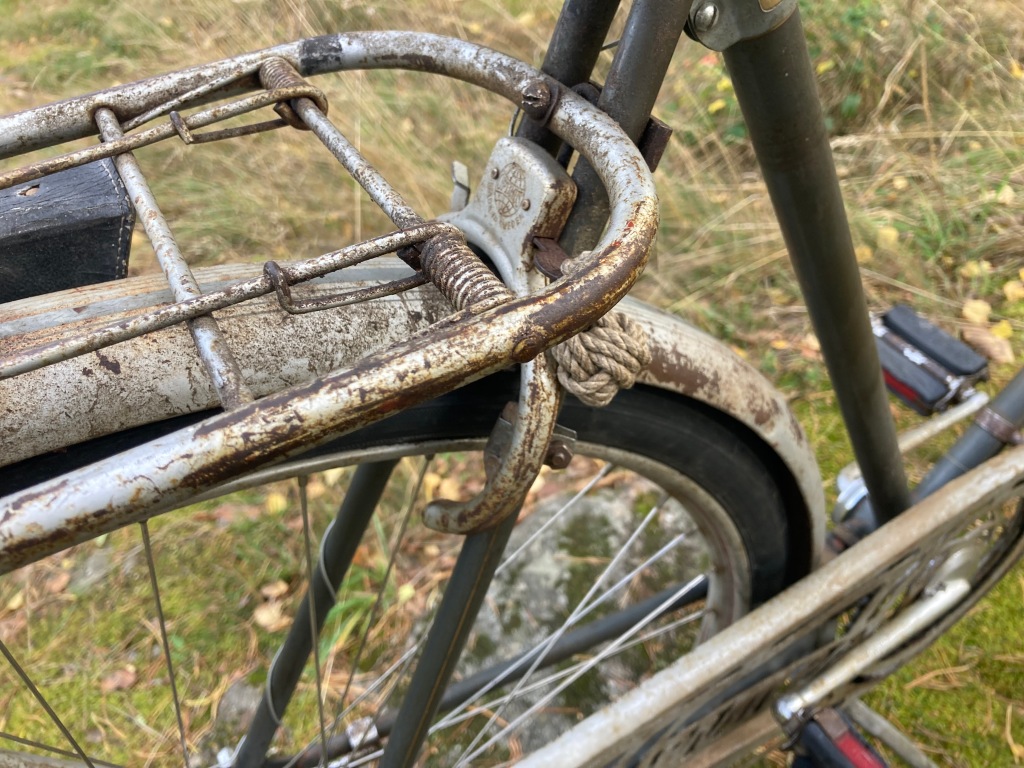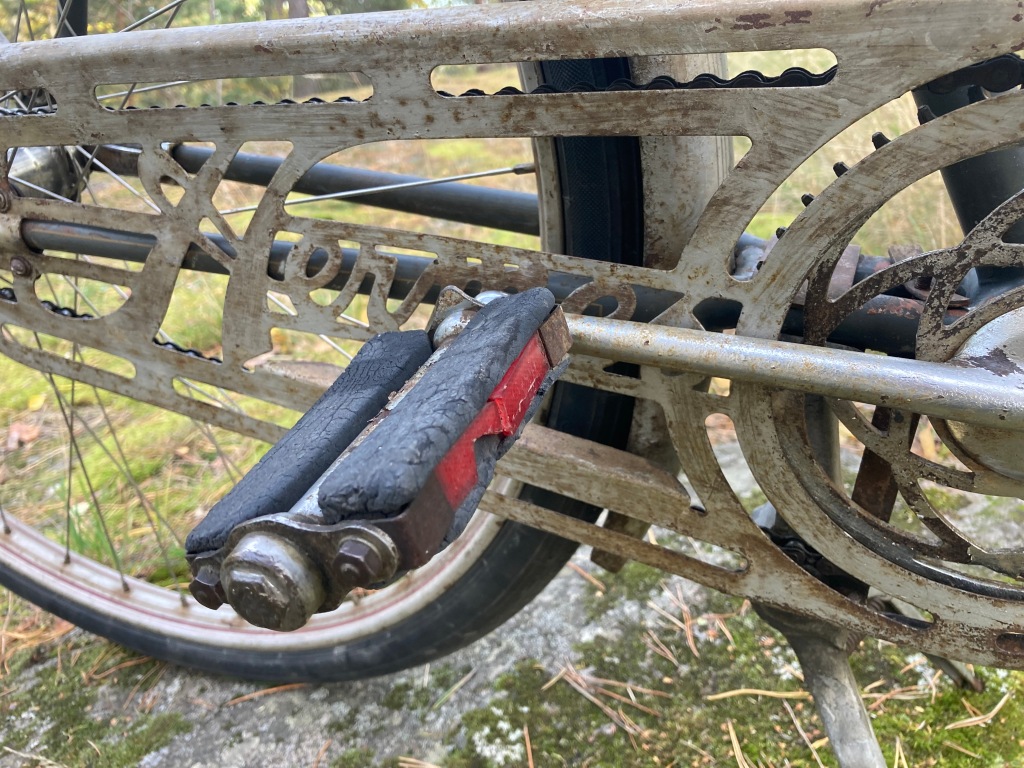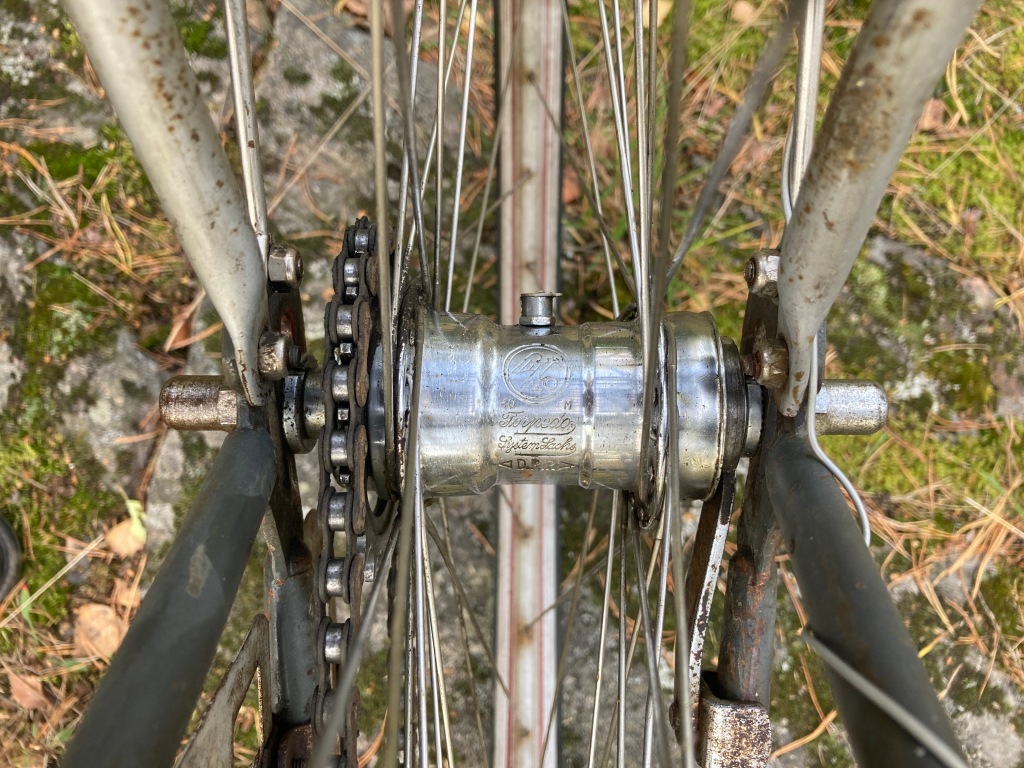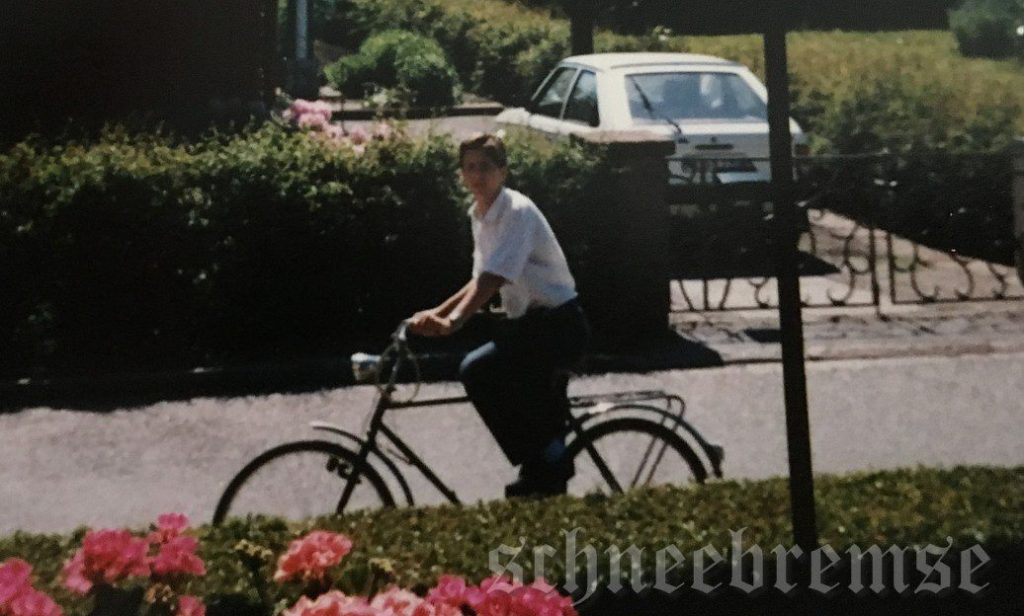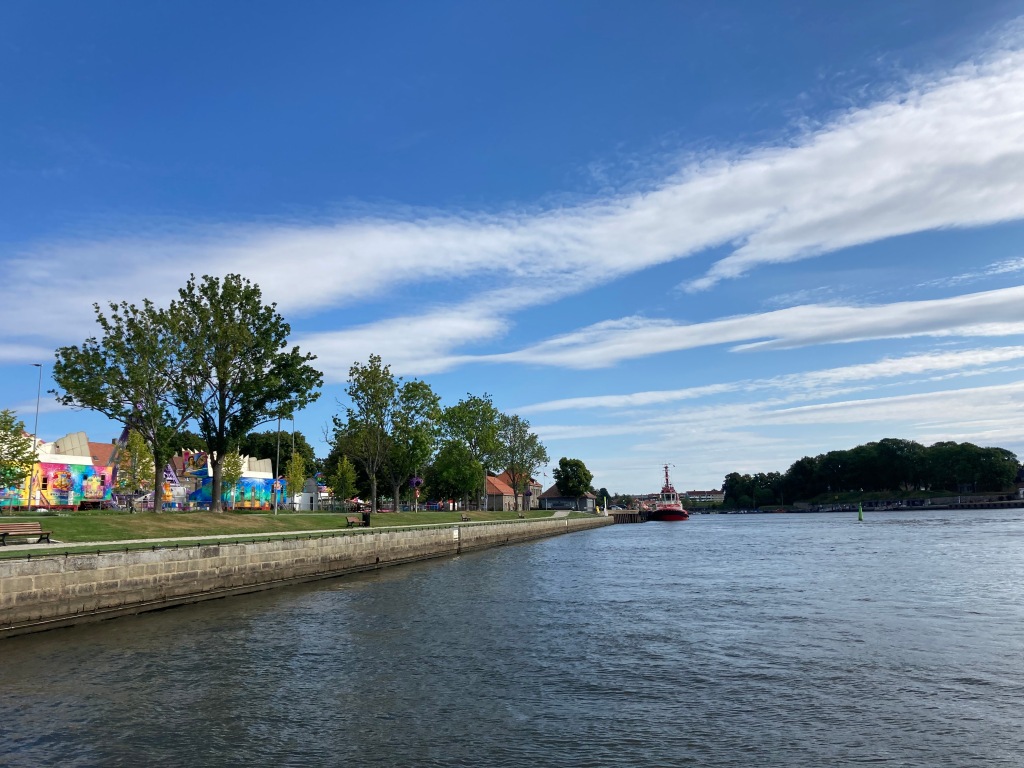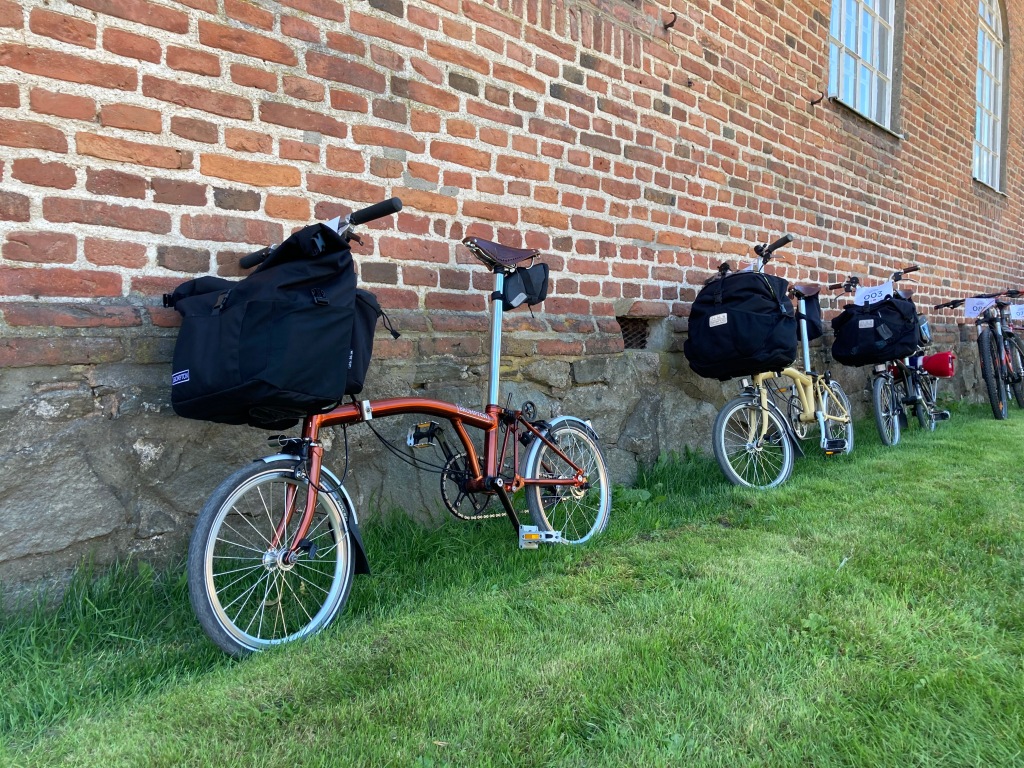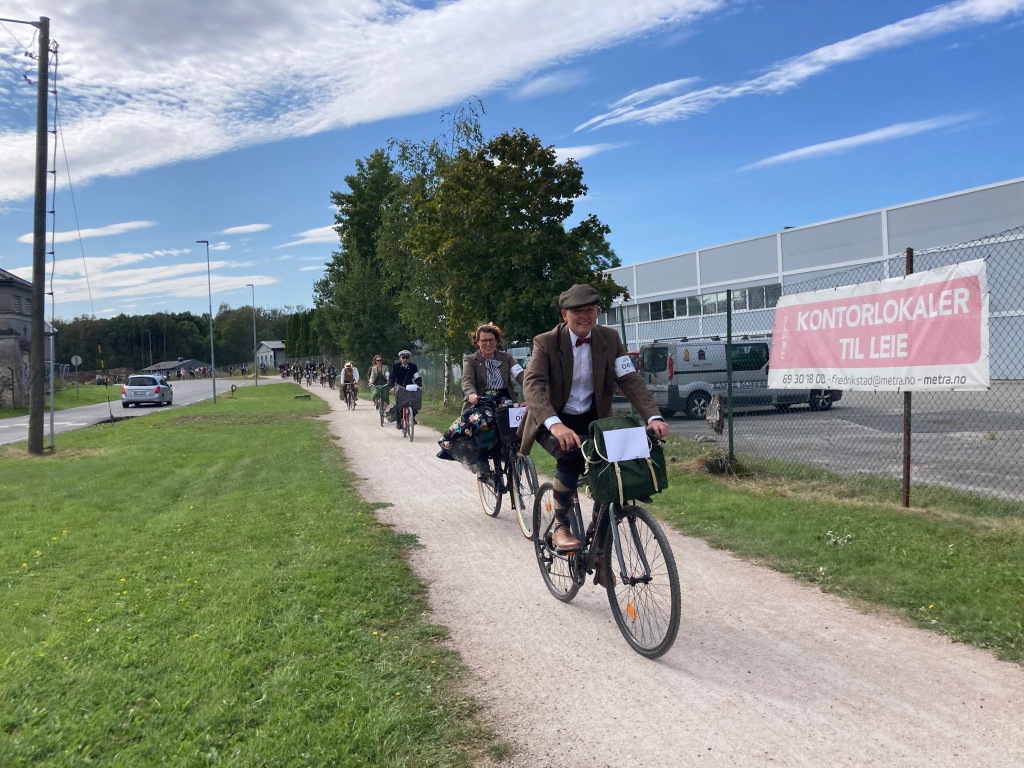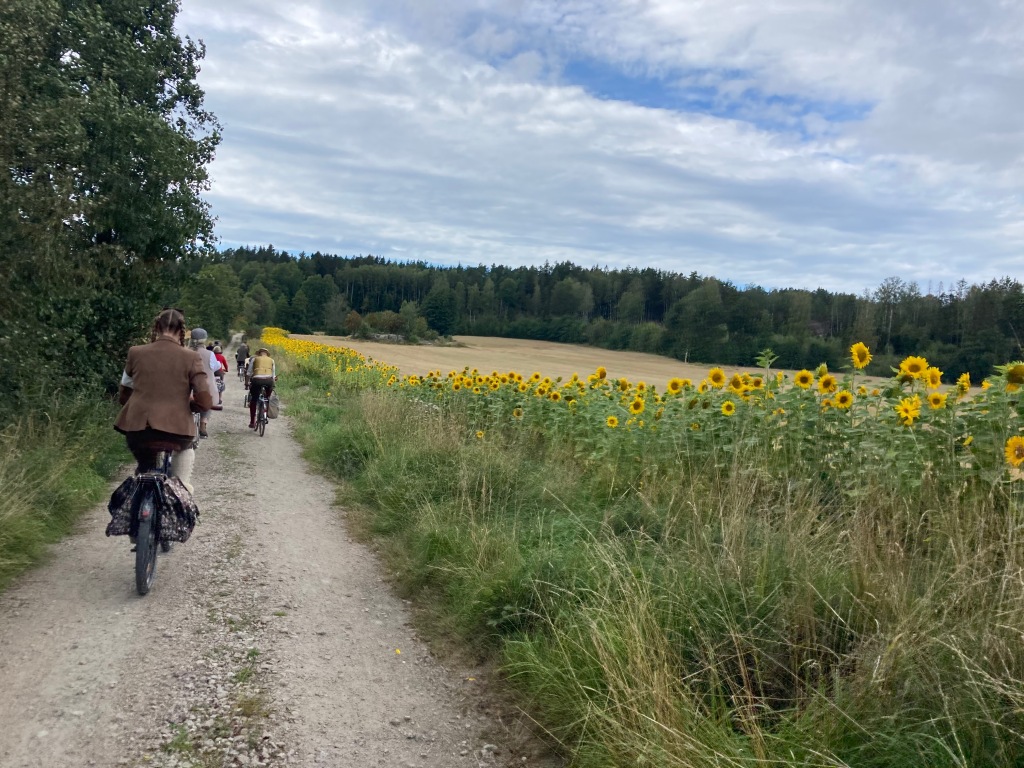Uppsala Vintage Biking is a small, intimate and cosy bicycle event often held the first Saturday in September each year. This Saturday the forecast had been predicting rather heavy rain the entire day. Riding a bicycle in snow is no problem at all, riding in burning sunshine in the middle of summer might be a tad challenging. But riding a bicycle when it pours cats and dogs is not a fun experience at all. We all hoped for the best and kept our fingers crossed for the weather to improve.
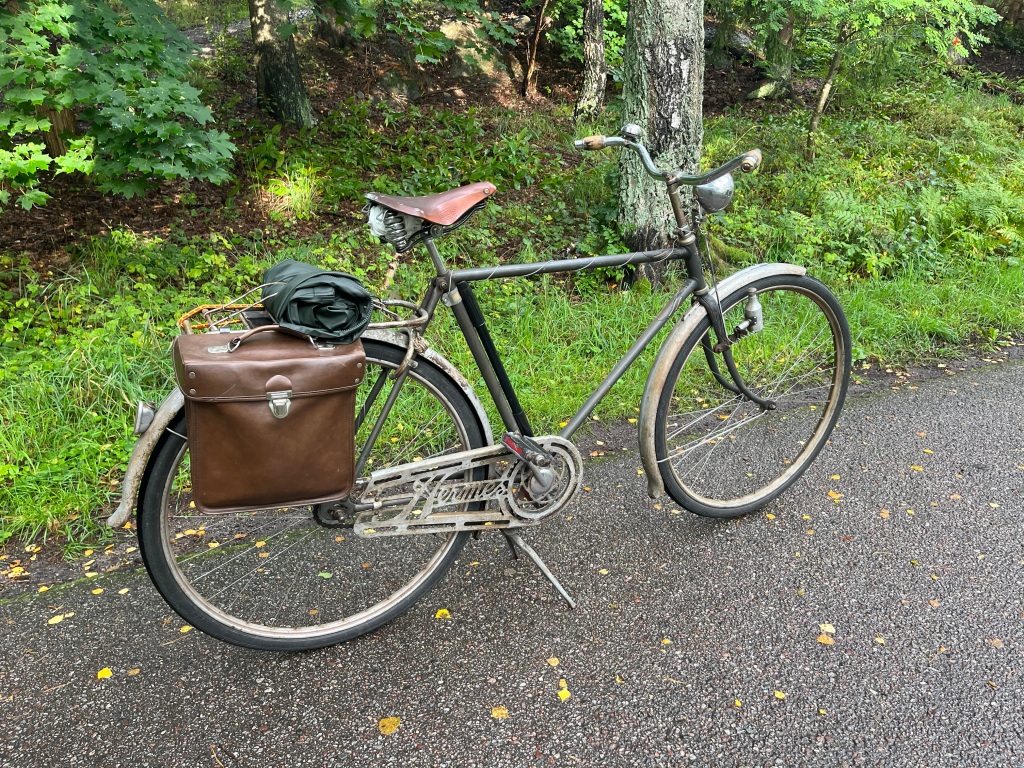
The day before the event the forecast changed a bit, instead of monsun like rain, the prediction were more of a drizzle around noon. Tweed is the perfect material when riding in slightly damped weather so I decided to go no matter what. Beside, I have a raincoat so a bit of rain is no problem at all.
After packing my bicycle bag with sandwiches, drinks and other goodies for the picnic. I went on my way to the train station to meet up with other tweedians for a joined train ride to Uppsala. It is always an adventure travel by train to an bicycle event. The regular train commuters have quite puzzled expressions on their faces, noticing all vintage bicycles and the well dressed people chatting and laughing in the morning rush hour.
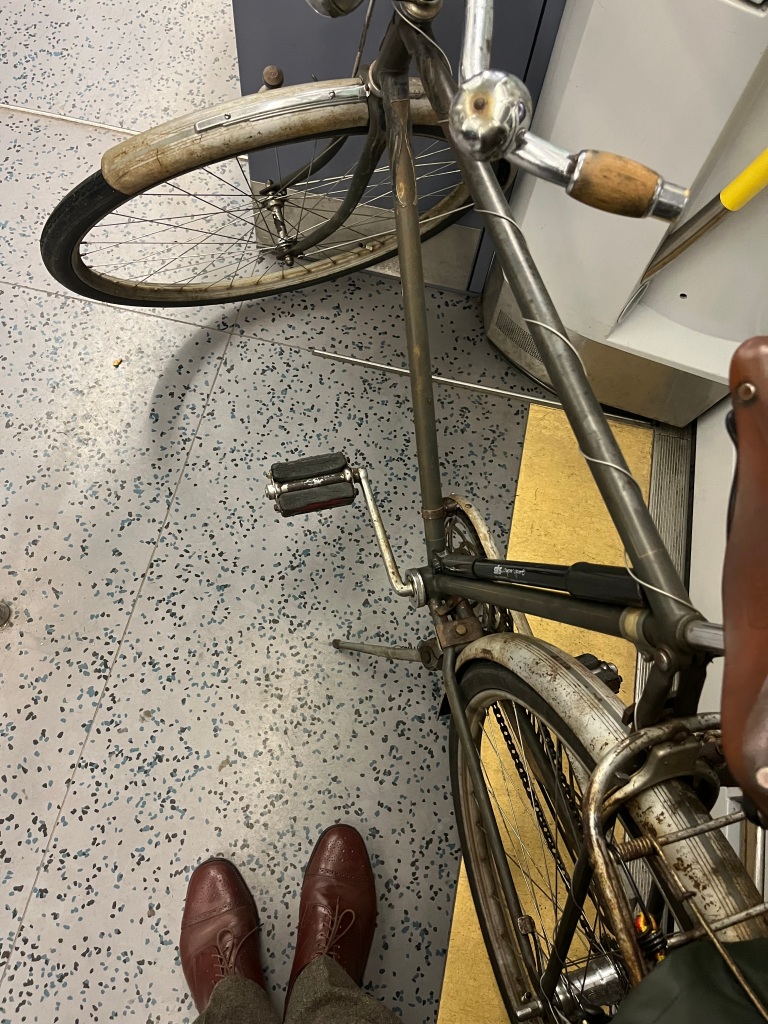
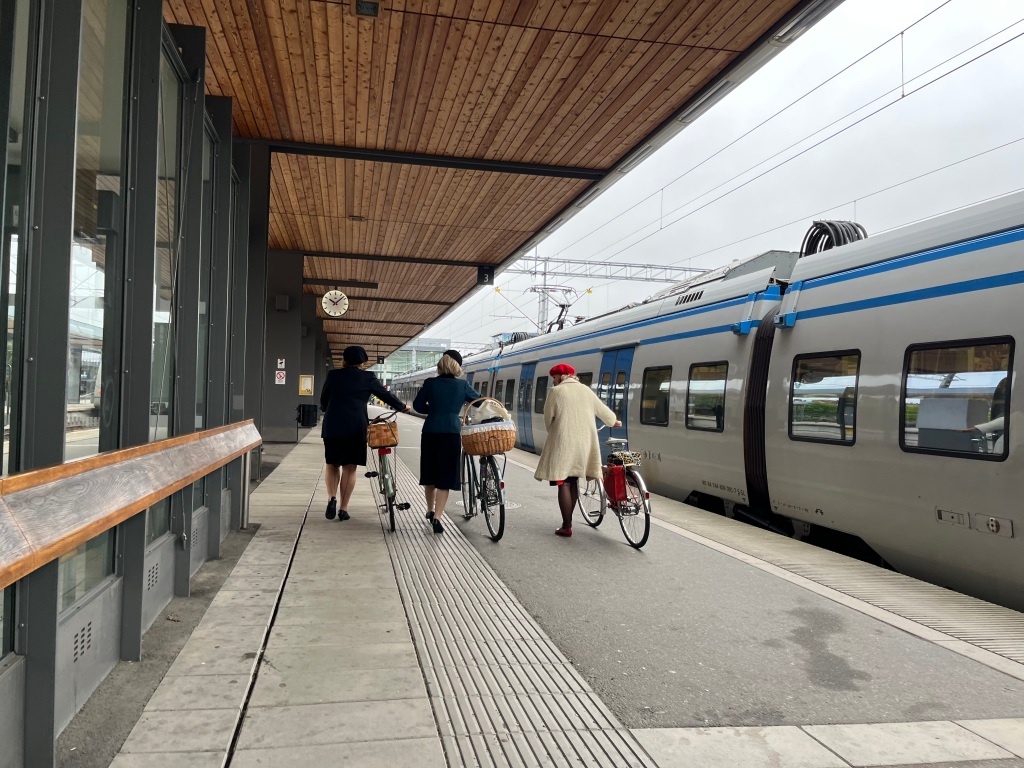
Upon arriving at Uppsala we went to the former Nymans factory where the start of the event is held. The factory is where they used to manufacture Hermes, Crescent and others bicycles back in the day and is a perfect meeting point for a vintage bicycle ride.
When we got there lots of people was already there, waving and greeting us welcome. It is such a nice feeling meeting not only old friends, but also new riders that are curious on what this bicycle riding event is and decided to join. It does not matter if you are a new or old tweedian (as I call us), if you are young or old. Everyone is equally welcome to join.
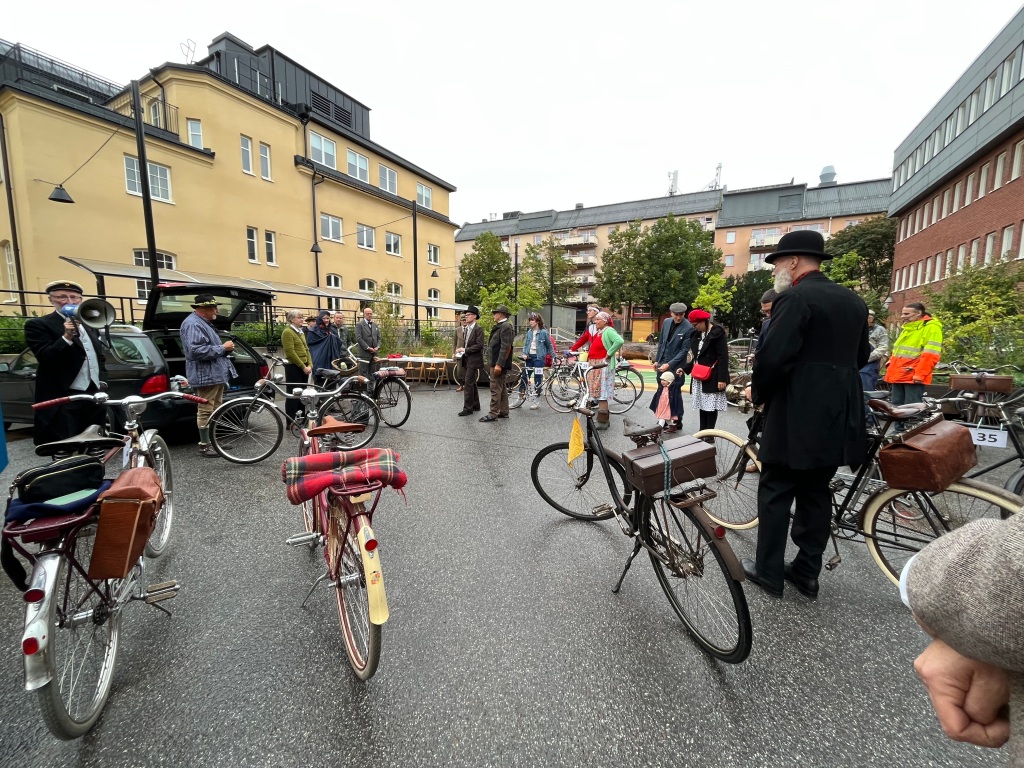
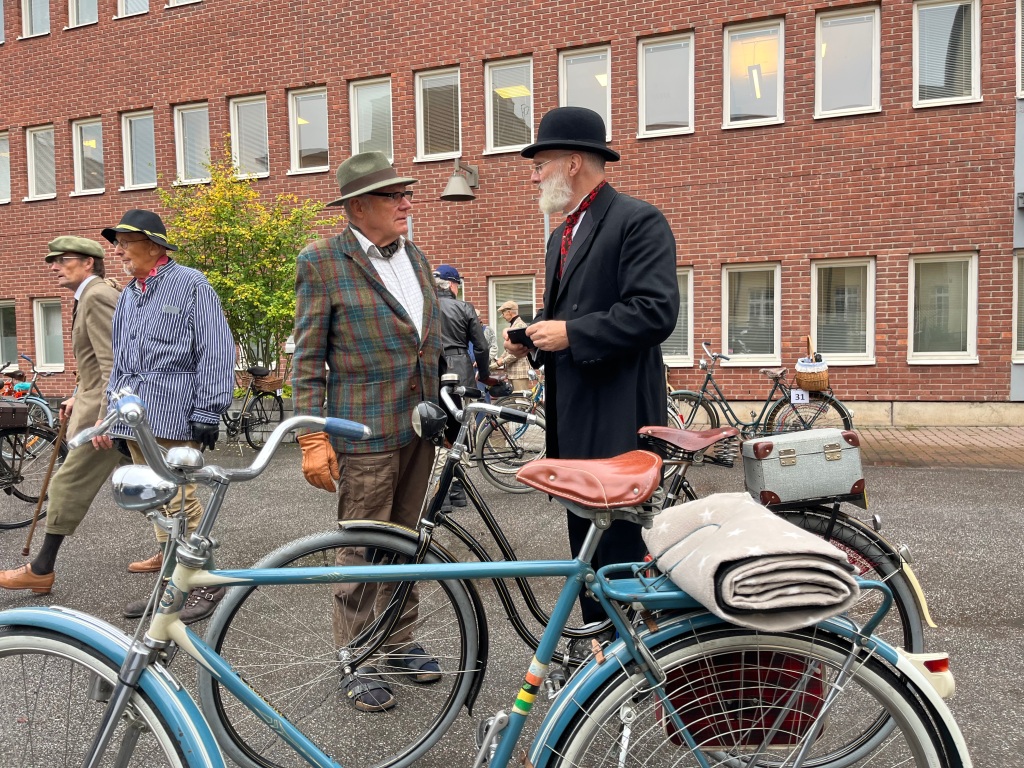
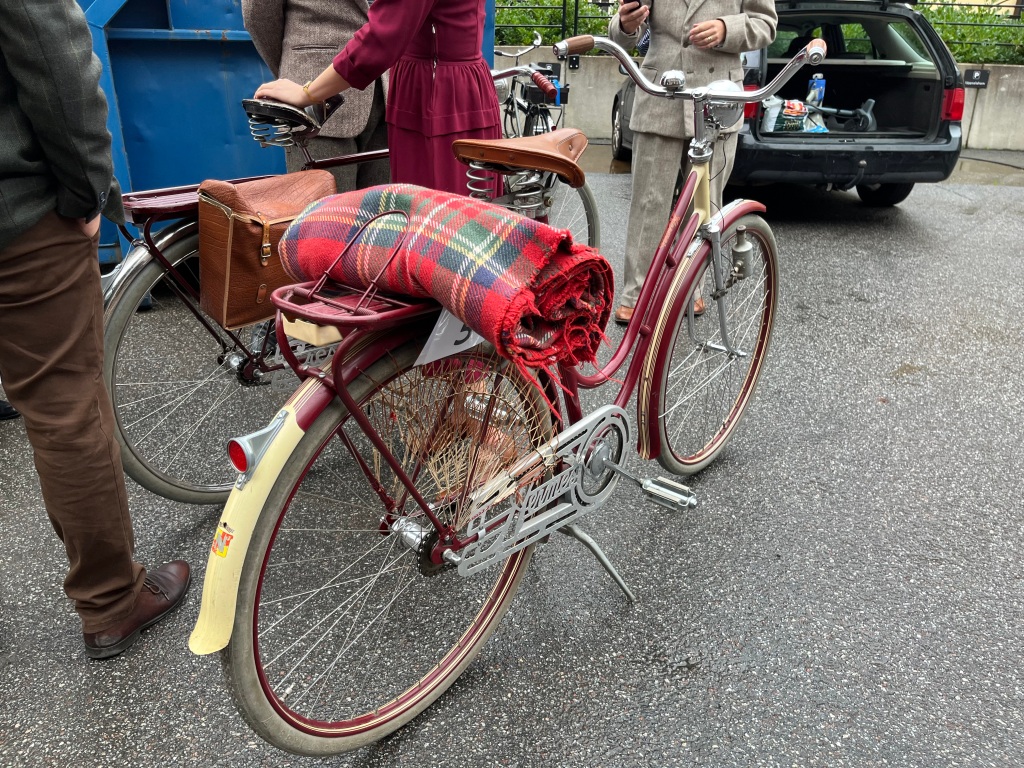
Everyone were happily welcomed by the organizers, we receiving our individual starting numbers and had lots of chatting with the organisers/riders/tweedians. After a while it was time to gather outside the factory parking lot out on the street. It was time for our departure. Uppsala Vintage Biking 2023 had officially started.
The ride of the day would take us along roads, paths and bridges in and around Uppsala. Riding on both known and unknowns streets, with some stops along the way for guidning and history telling by the organizers.
To my knowledge, Uppsala Vintage Biking is one of few bicycle events that really take the time to tell about local history mixed with interesting facts and charming anecdotes.
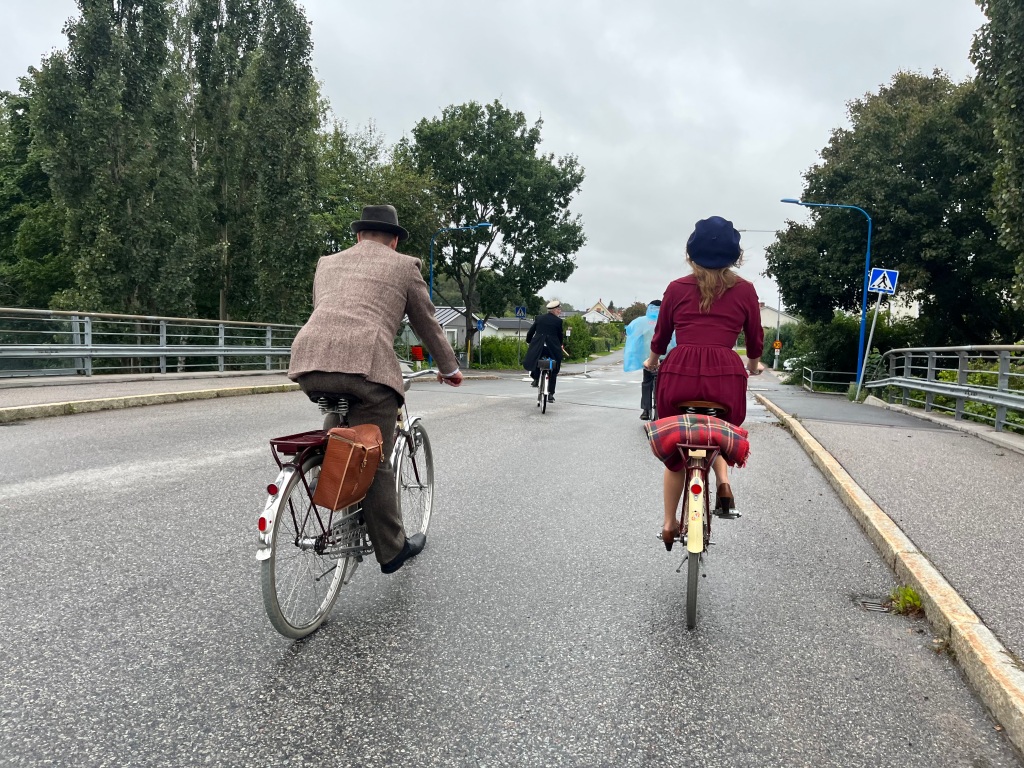
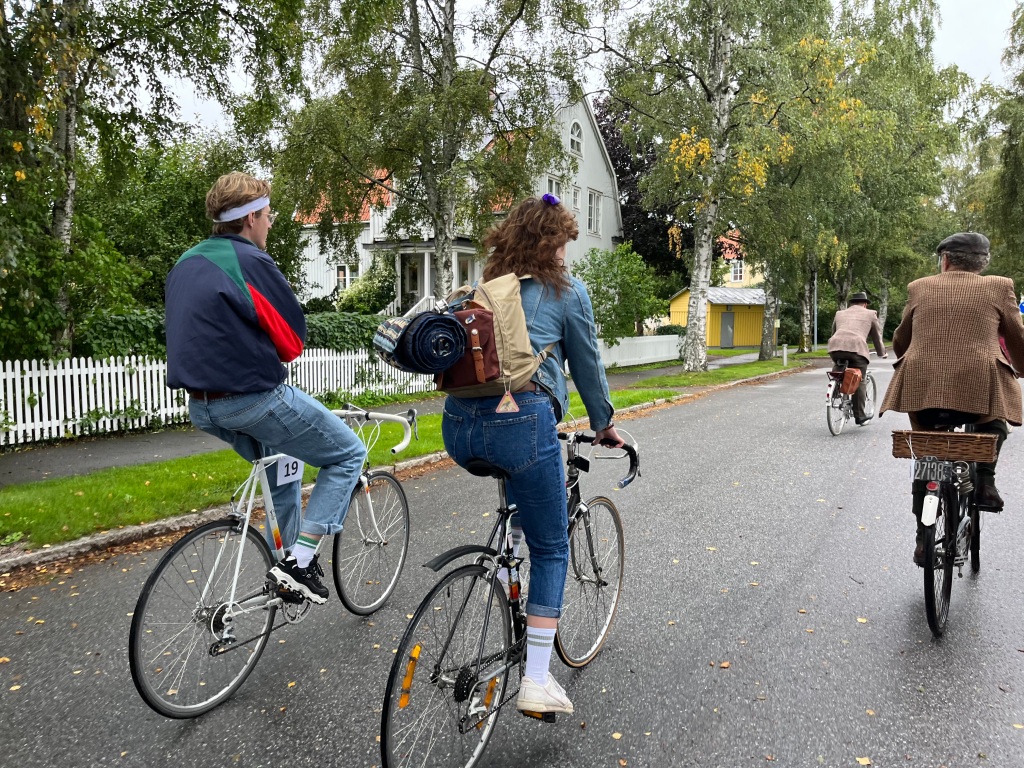
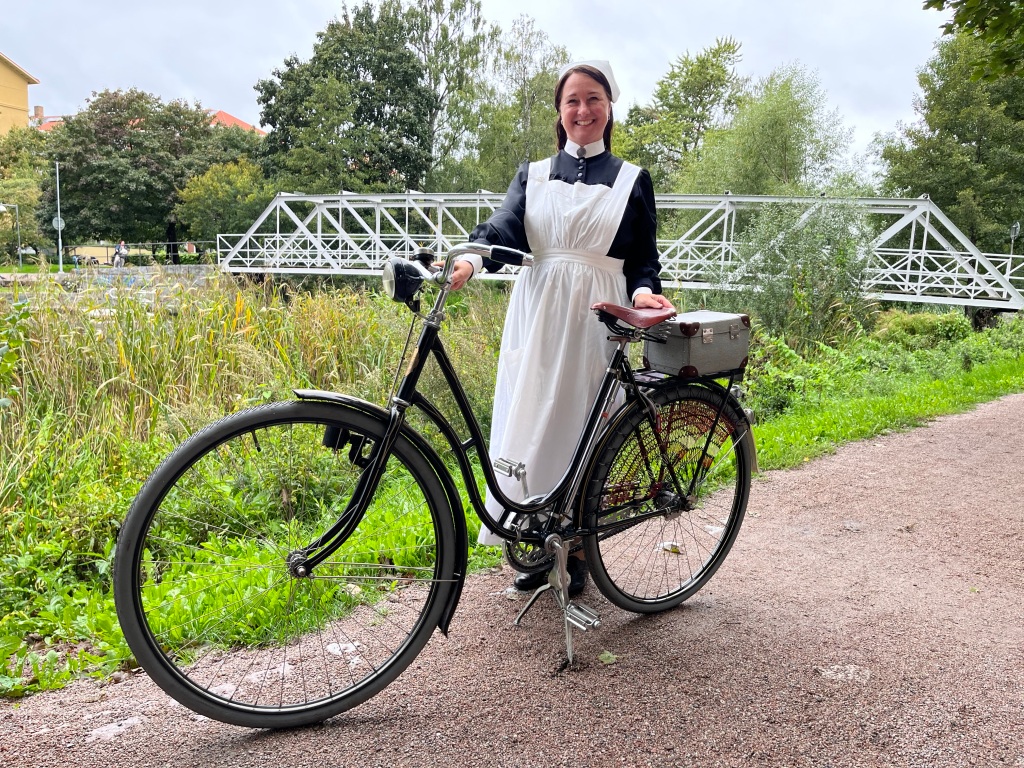
We continued our ride, going up and down hills. We were completely lost on where we were at times, but that did not matter. We all enjoyed the ride immensely.
After riding for a while it was time for our picnic. Since the weather was so unstable earlier that week. The organisers had made arrangements for us to have our picnic inside Östgöta Nation. That is one of the student nations in Uppsala where university students can meet, have a dinner, study and relax. All the different nations in Uppsala is named after different countys in Sweden (or at least I think so).
The picnic surroundings was really nice and unique, we were in the basement pub of Östgöta Nation having our sandwiches and tea. After a while some of us went outside to stretch our legs and admire all parked bicycles. It was a good opportunity to meet other tweedians and talk about bicycles, tweed and this and that for a while.
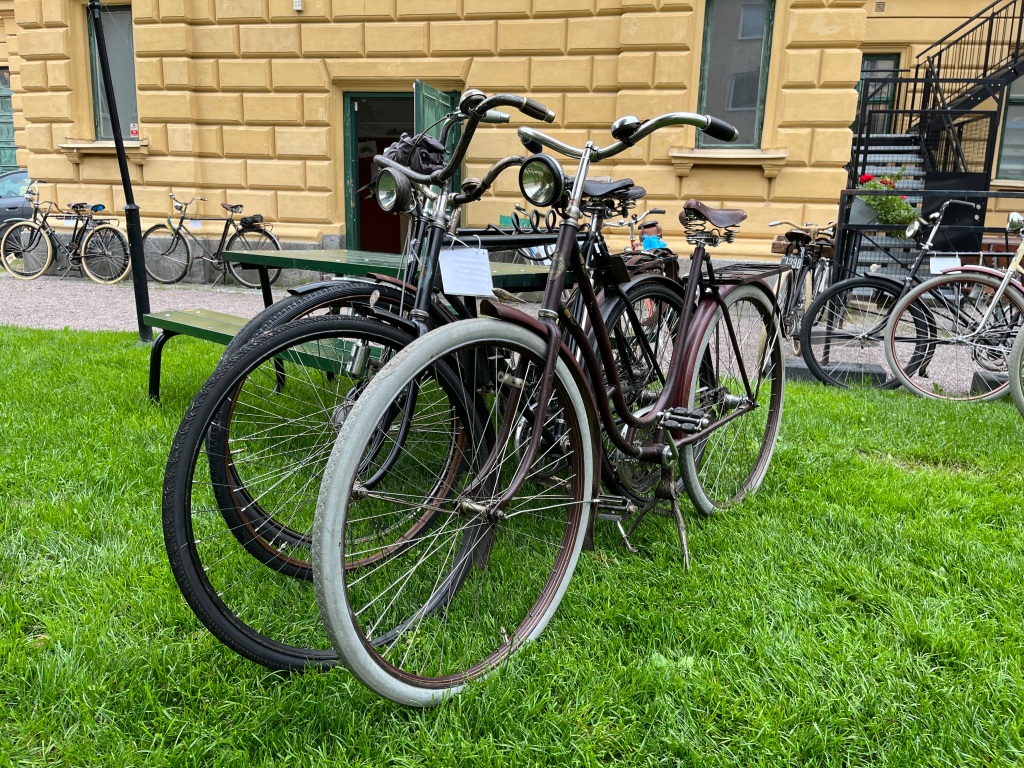
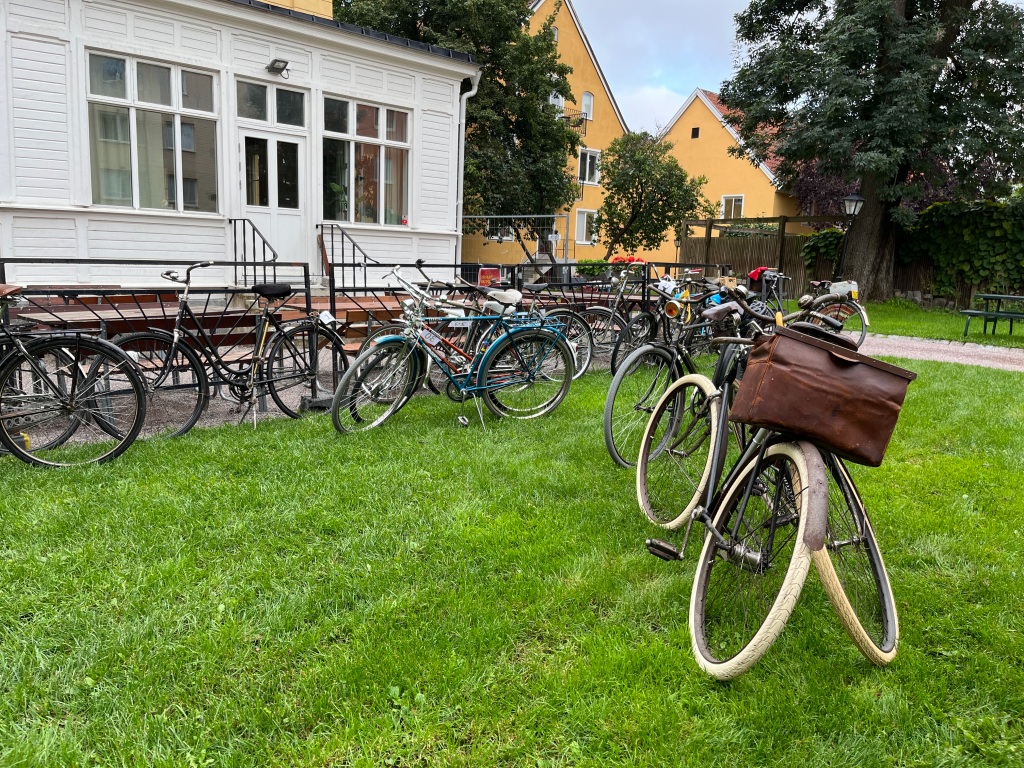
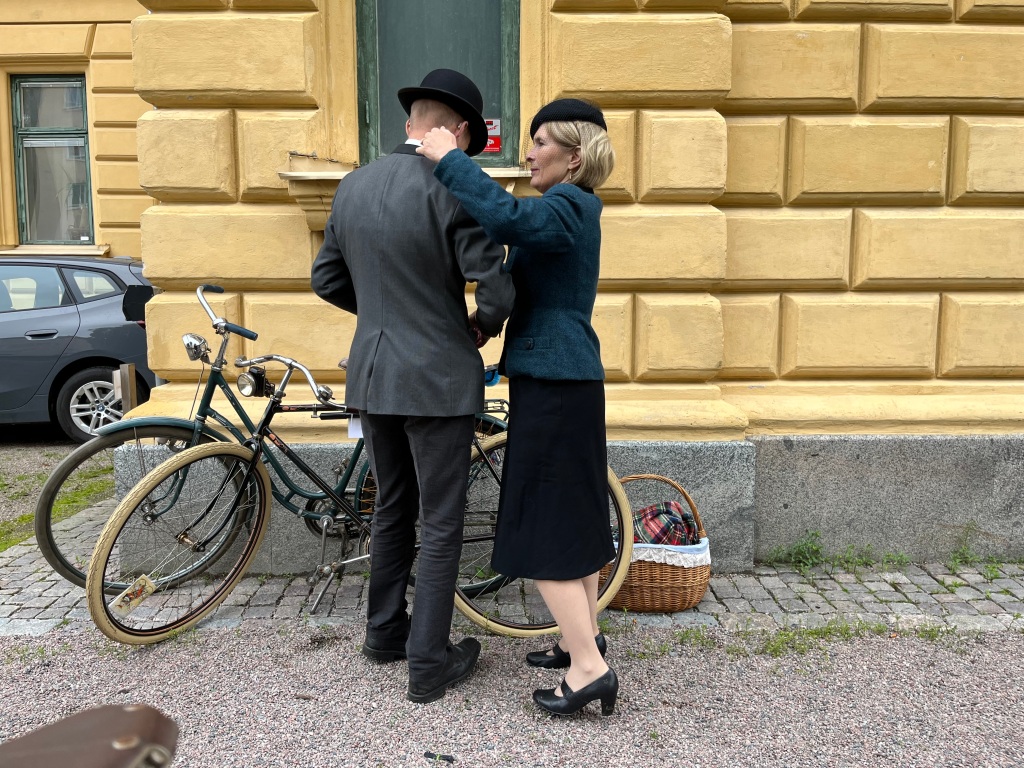
The time had come to be on our way for the last part of the ride. We all gathered on the street in front of the Östgöta Nation building waved goodbye before experience more of Uppsala. The ride took us to Stortorget (the grand square) to take a look on the new statue that had been erected there. It was a statue of an Hermes bicycle commemorating that Uppsala is a town fore ever linked with bicycles. Both the Nymans factory and all students that rode bicycles made Uppsala a true bicycle town.
I like to once again mention that riding a bicycle is a perfect way to experience a city. Take a ride along all those back roads, finding small parks here and there, enjoying forest paths, local culture and other gems that you usually miss when only walking or riding a car.
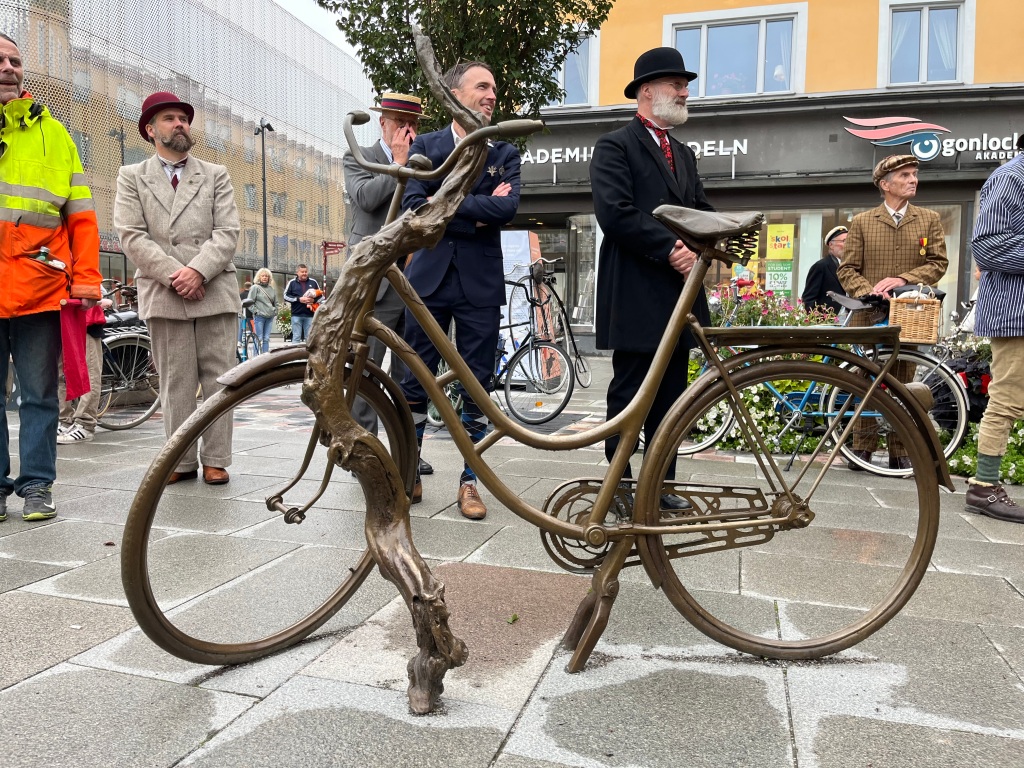
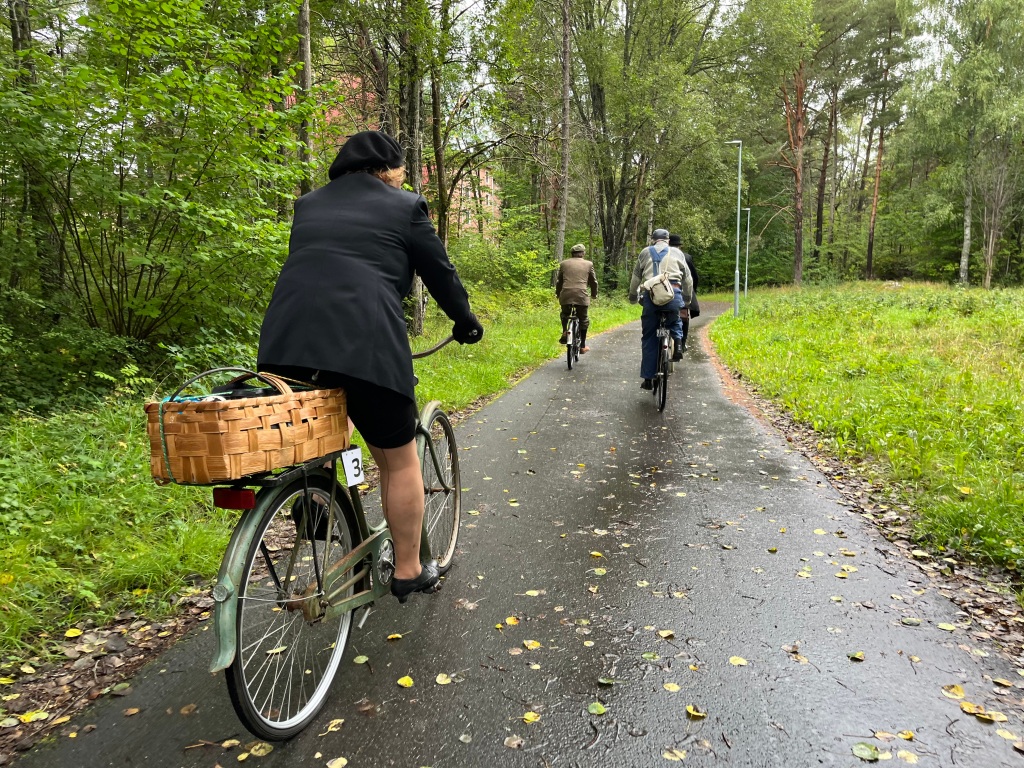
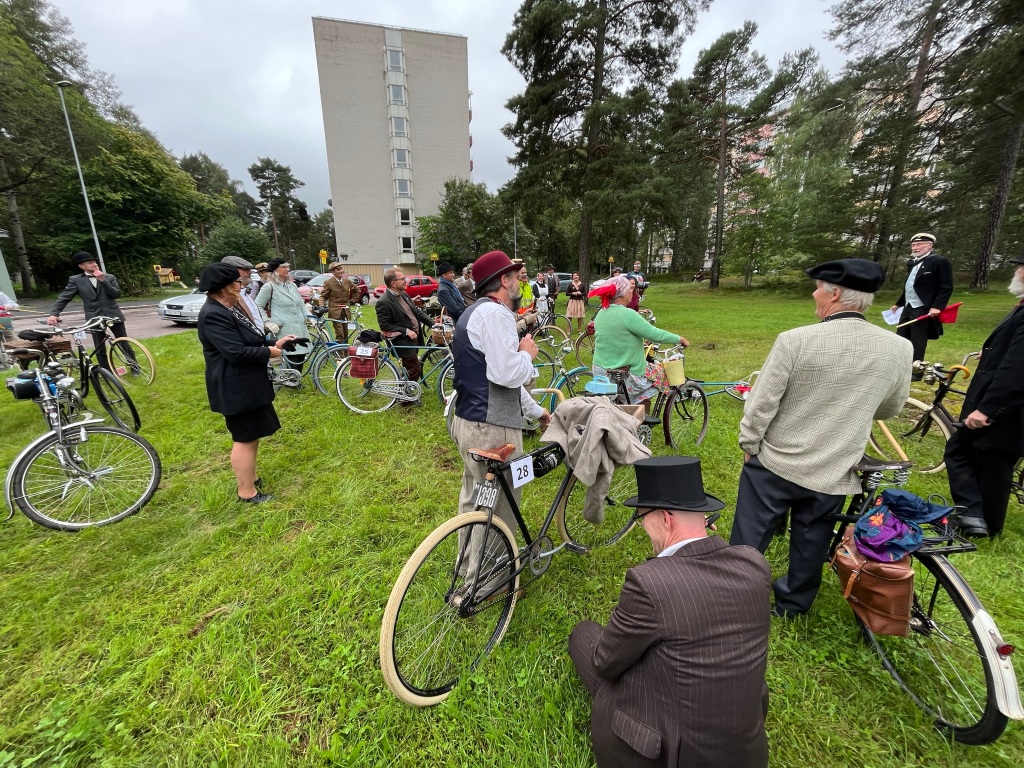
After riding for a while we arrived at Uppsala botanical garden. The finish line for the ride and where we have the closing ceremony, along with a group photo and handing out awards for best dressed riders and best looking bicycle.
This year the organisers had help with selecting the winners in each category by a special jury. The winners received an well earned medal as tradition followed by applauds and cheers.
One thing that really impress me with Uppsala Vintage Biking is that every ride I have participated so far there has always been new things to learn. If more rides could adapt the same “show and tell” style. Stopping by for telling a story about a significant building, or where a famous person use to live. By adding personal and fun facts makes it a very nice and personal event.
The organisers thanked all the participants for attending Uppsala Vintage Biking 2023 and as left us with these final words: “it is the guests that make a party”. But as we all know, there is no party with out the organisers. Thank you for a wonderful event!
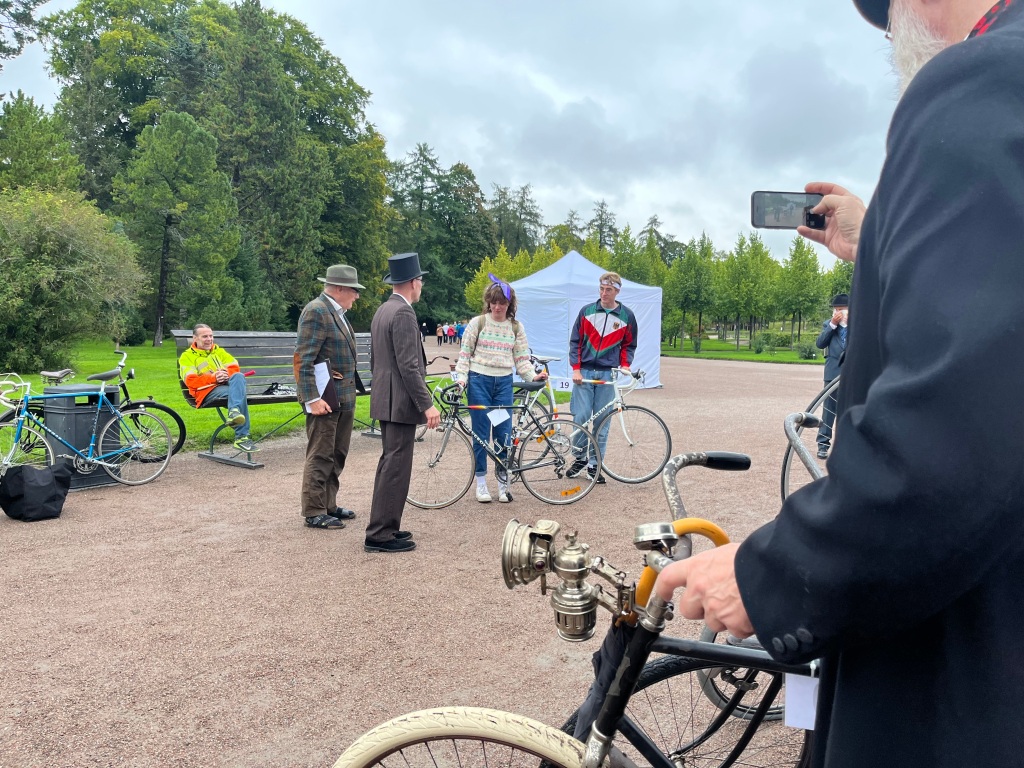
Now that the event was officially finished we took a ride to Uppsala train station to visit the restaurant “The station” for drinks and something to eat. It has become somewhat a tradition for us to end the evening there.
The evening continued with a refreshing gin and tonic and lots of laughs. For dinner many of us decided to order the venison meat balls with mashed potatoes, lingon berries and pickle cucumber. Highly recommended if you visit Uppsala. Washed down with a cold beer, that is the bees knees – I say!
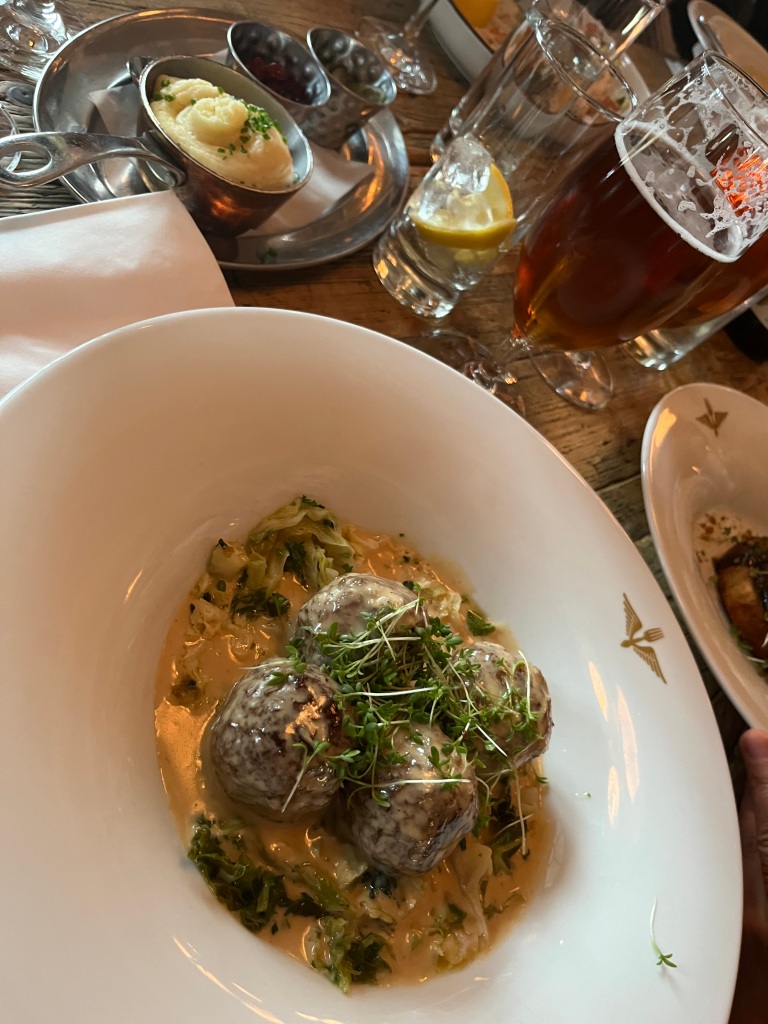
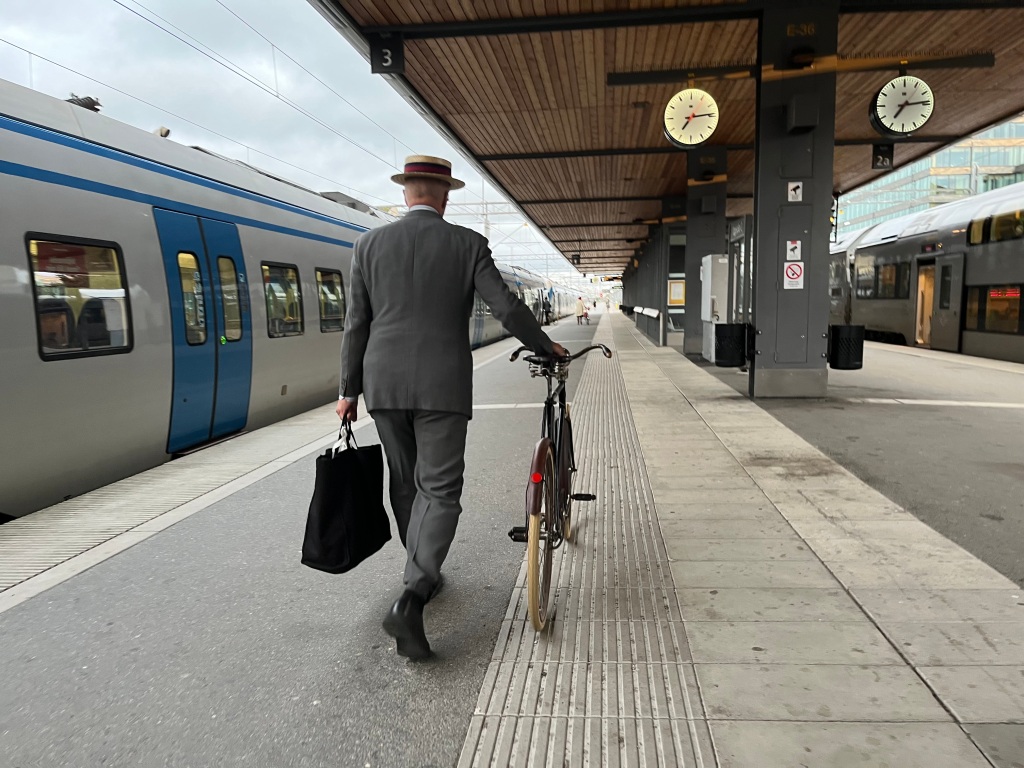
After the dinner and all that remained was the train ride home. We headed out on to the plattform, bought tickets and embarked the train at this hour the train was almost empty, it was nice to sit down and just enjoy the train home.
We all had a lovely day and I hope that I can make it to Uppsala Vintage Biking next year.
Happy tweed dear readers.
